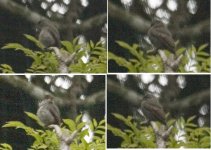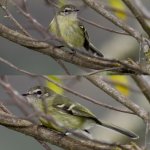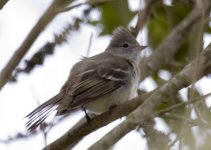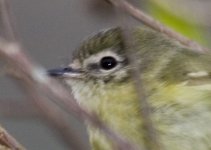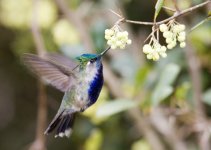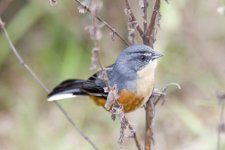Nick Brooks
Well-known member
Getting to the end of my problematic birds from a recent trip to Brazil. This time here's three flycatchers I need help with.
Despite much searching, I still have absolutely no idea what flycatcher 1 is having not found anything that looks remotely like it on the web or in field guides or Ridgely and Tudor (if indeed it is a flycatcher). This bird was certainly behaving like a flycatcher; just flying up catching flies and returning to the same perch.
After much research, I believe flycatcher 2 may be a rough legged tyrannulet but have deduced this from a picture of a planalto tyrannulet and then a written description of the differences. I have yet to even find another image of this species.
I believe flycatcher 3 is just a pale yellow-bellied elaenia but as always would appreciate any input.
cheers
Nick
Despite much searching, I still have absolutely no idea what flycatcher 1 is having not found anything that looks remotely like it on the web or in field guides or Ridgely and Tudor (if indeed it is a flycatcher). This bird was certainly behaving like a flycatcher; just flying up catching flies and returning to the same perch.
After much research, I believe flycatcher 2 may be a rough legged tyrannulet but have deduced this from a picture of a planalto tyrannulet and then a written description of the differences. I have yet to even find another image of this species.
I believe flycatcher 3 is just a pale yellow-bellied elaenia but as always would appreciate any input.
cheers
Nick




